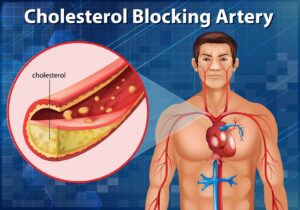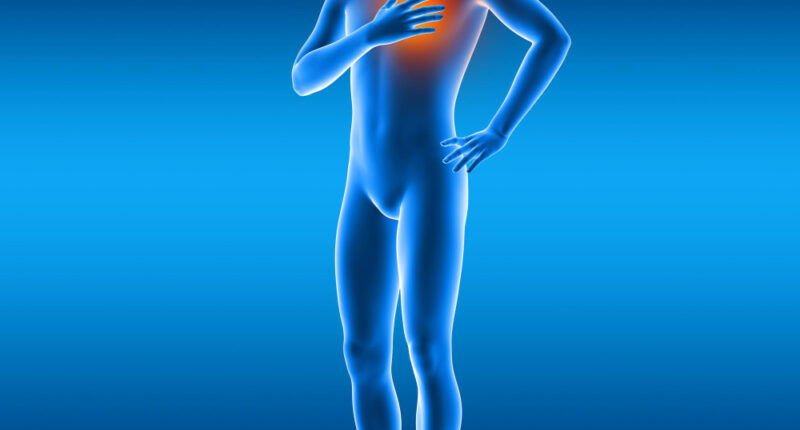Angina is a common and often alarming symptom that can be caused by a variety of conditions, some of which are serious. Understanding the potential causes, and associated symptoms, and knowing when to seek medical attention is crucial for anyone experiencing chest pain. This comprehensive guide will explore the various aspects of Angina to help you make informed decisions about your health.
What Causes Angina?
Angina can stem from different sources, including the heart, lungs, gastrointestinal tract, muscles, bones, or nerves. The following are the most common causes of chest pain:
- Cardiovascular Causes:
- Angina: When the heart muscles don’t receive enough blood flow, it can lead to chest pain. It often occurs during physical activity or stress and typically subsides with rest.
- Heart Attack: A blockage in one or more coronary arteries leading to the death of heart muscle cells. This is a medical emergency characterized by severe chest pain, often radiating to the arm, neck, or jaw.
- Pericarditis: Inflammation of the sac surrounding the heart, causing sharp, stabbing chest pain that may worsen with deep breaths or lying down.
- Pulmonary Causes:
- Pulmonary Embolism: A blood clot in the lungs, causing sudden, sharp chest pain, shortness of breath, and potentially coughing up blood. This is another medical emergency.
- Pneumonia: Infection of the lungs, which can cause chest pain that worsens with coughing or deep breathing.
- Gastrointestinal Causes:
- Gastroesophageal Reflux Disease (GERD):Acid reflux causes a burning sensation in the chest, often mistaken for heart pain.
- Oesophagal Spasms: Sudden, painful contractions of the oesophagus, which can mimic heart pain.
- Musculoskeletal Causes:
- Costochondritis: Inflammation of the cartilage connecting the ribs to the breastbone, causing localized chest pain.
- Muscle Strain: Overuse or injury to chest muscles can cause persistent pain, especially with movement.
- Other Causes:
- Anxiety and Panic Attacks: Intense anxiety can cause chest pain that mimics a heart attack, often accompanied by shortness of breath and rapid heartbeat.
- Shingles: A viral infection causing a painful rash and nerve pain, which can affect the chest area.

Symptoms Associated with Angina
Identifying the characteristics and accompanying symptoms of chest pain can help determine its cause:
- Cardiovascular Symptoms:
- Pressure, tightness, or squeezing sensation in the chest.
- Pain radiating to the arms, back, neck, jaw, or stomach.
- Shortness of breath, sweating, nausea, or dizziness.
- Pulmonary Symptoms:
- Sharp, stabbing pain worsening with deep breaths or coughing.
- Sudden onset of breathlessness or rapid breathing.
- Coughing up blood.
- Gastrointestinal Symptoms:
- Experience a burning sensation behind the breastbone, particularly after meals.
- Pain that improves with antacids.
- Difficulty swallowing or sensation of food stuck in the chest.
- Musculoskeletal Symptoms:
- Localized pain that worsens with movement or pressure on the chest.
- Pain that improves with rest and worsens with physical activity.
- Other Symptoms:
- Intense fear or sense of impending doom with anxiety-related chest pain.
- Painful, blistering rash with shingles.
When to Seek Medical Help
Angina should never be ignored, especially if it is sudden, severe, or accompanied by other concerning symptoms. Don’t forget to seek immediate medical attention if you experience symptoms:
- Sudden, severe chest pain or pressure.
- Feel pain spreading to your arms, back, neck, jaw, or stomach.
- Shortness of breath, sweating, nausea, or vomiting.
- Dizziness or fainting.
- Rapid or irregular heartbeat.
- Remember to be aware of the symptoms of a heart attack or pulmonary embolism.
Managing and Preventing Angina
Depending on the underlying cause, chest pain can be managed and prevented through various strategies:
- Lifestyle Changes:
- Maintain a healthy diet and exercise regularly to reduce the risk of heart disease.
- Avoid smoking and limit alcohol consumption.
- Manage stress through relaxation techniques such as yoga, meditation, or deep breathing exercises.
- Medications:
- Follow prescribed treatments for conditions like angina, GERD, or anxiety.
- Use over-the-counter pain relievers for musculoskeletal pain as recommended.
- Regular Check-Ups:
- Regular medical check-ups can help detect and manage underlying conditions early.
Conclusion
Angina can be caused by a wide range of conditions, some of which are life-threatening. Understanding the potential causes and associated symptoms can help you respond appropriately. Always seek medical attention if you experience severe or unexplained chest pain to ensure timely and effective treatment. By taking proactive steps to maintain your health and manage underlying conditions, you can reduce the risk of chest pain and improve your overall well-being.









